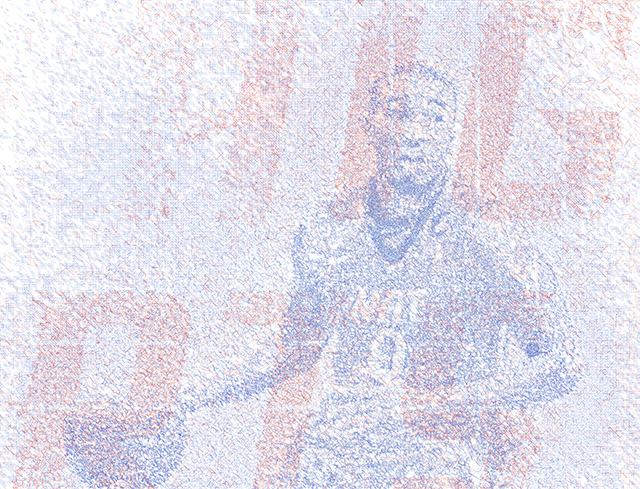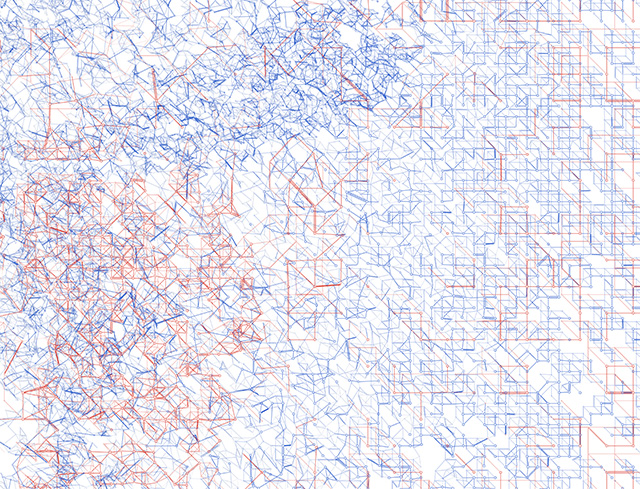NJIT Wellness and Events Center (WEC) is a multi-use building which will incorporate many functionalities for both NJIT Athletic Department and the campus students. The “central feature” of the whole building is a 3,500-seat multi-purpose arena. Its west concourse also serves as the main north-south circulation route. During the early design phase, the west wall of this corridor was identified as an opportunity to demonstrate NJIT sports identity. The wall is 250 x 15 ft on the concourse level, and there is a 50 x 10 ft wall on the level above that is within the same concourse/circulation space.
Putting sport-themed graphics on a wall is nothing novel at all. If look from afar, say from point A in the arena seating area on the other side, the graphics wall looks just normal, composed of NJIT student athletes and Highlander’s logo type in NJIT’s red/blue color palate.
What makes this one distinguished is on the micro scale. Since NJIT is well-known for its STEM programs, the design concept was inspired from science/technology. The whole wall was re-imagined as a “giant molecule” consists of millions of atoms and chemical bonds. The initial rectilinear matrix of atoms is still and “low energy”. It becomes dynamic once receives energy from outside, in this case NJIT’s student athletes (Don’t quote me if you have a STEM degree, please). The atoms starts to move randomly and their positions become randomized. They finally resettle and “crystallized” on their new position, visually creates a new pattern.
Below shows what you will see when you gradually approach the wall.
As you may have noticed, the change from still to dynamic is captured and framed. The visual output of this graphic wall is one “snapshot” of the a dynamic system. As you walk along the wall, you will be able to see where the change begins and where it ends. The pattern also changes in other ways, like density and connection quantity.
The physical installation process needs the wall to be printed in 5 x 15 ft strips and stitch them together. A regular PC’s hardware does not allow the graphics to be generated all at once, so it is not possible for me to generate a huge raster/vector file and graphically divide it. The only solution is to generate it piece by piece, in other word, divide data. The work flow here involves another interesting feature of computer algorithm: the random position of atoms are actually not truly “random”. As long as it has the same initial state (in this case the XY position) and all other control parameters stays the same, it could move to the same “random” position every time the algorithm runs if we tell the algorithm to do so. This allows the wall to be divided into as many pieces as needed, without compromising the seamless stitching during installation.
NJIT WEC is currently under construction. It will be open in 2017.








